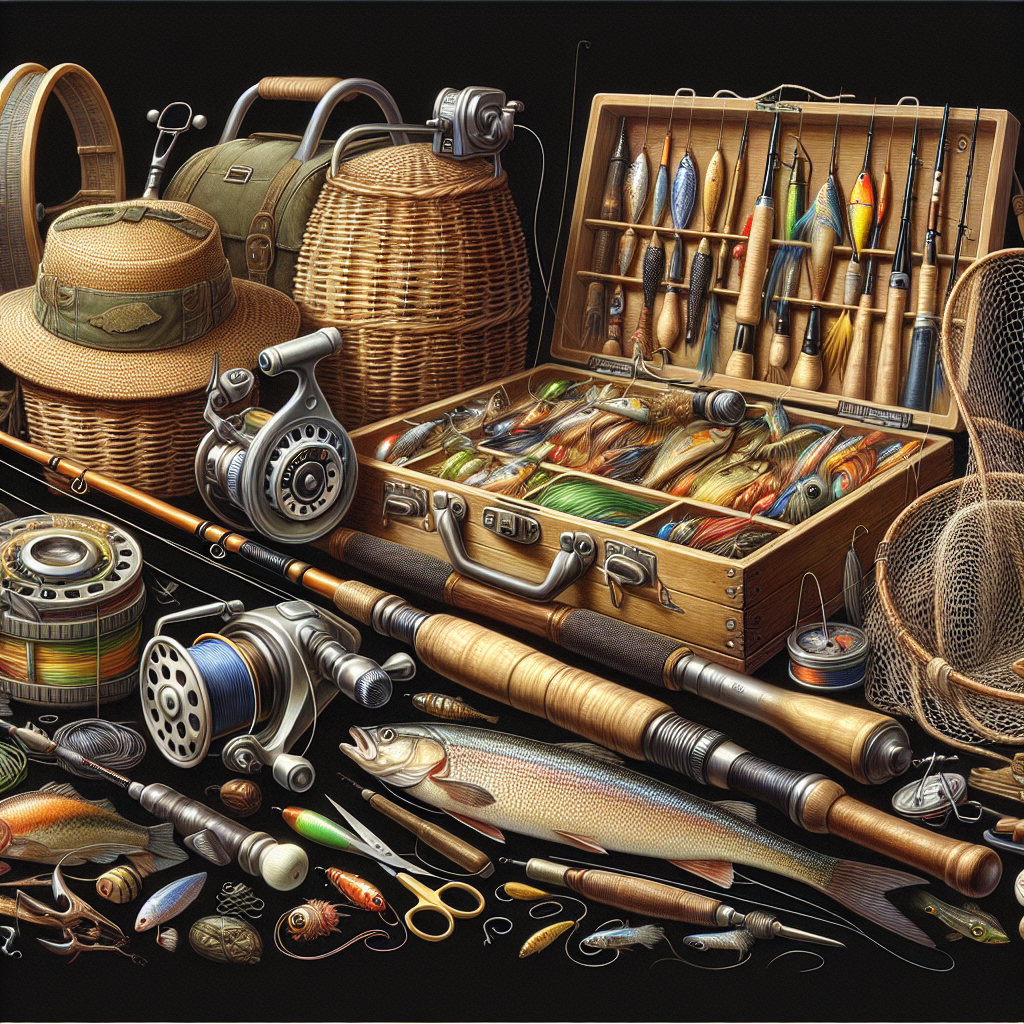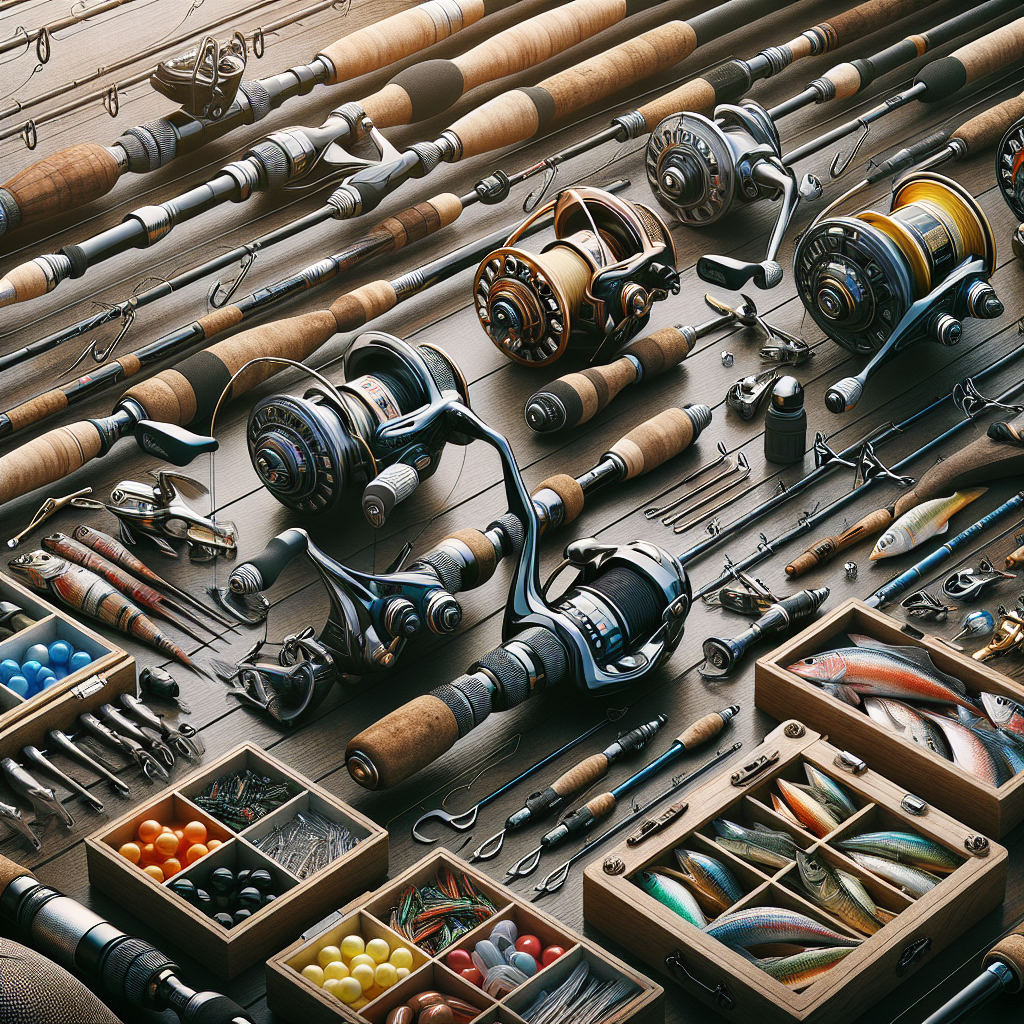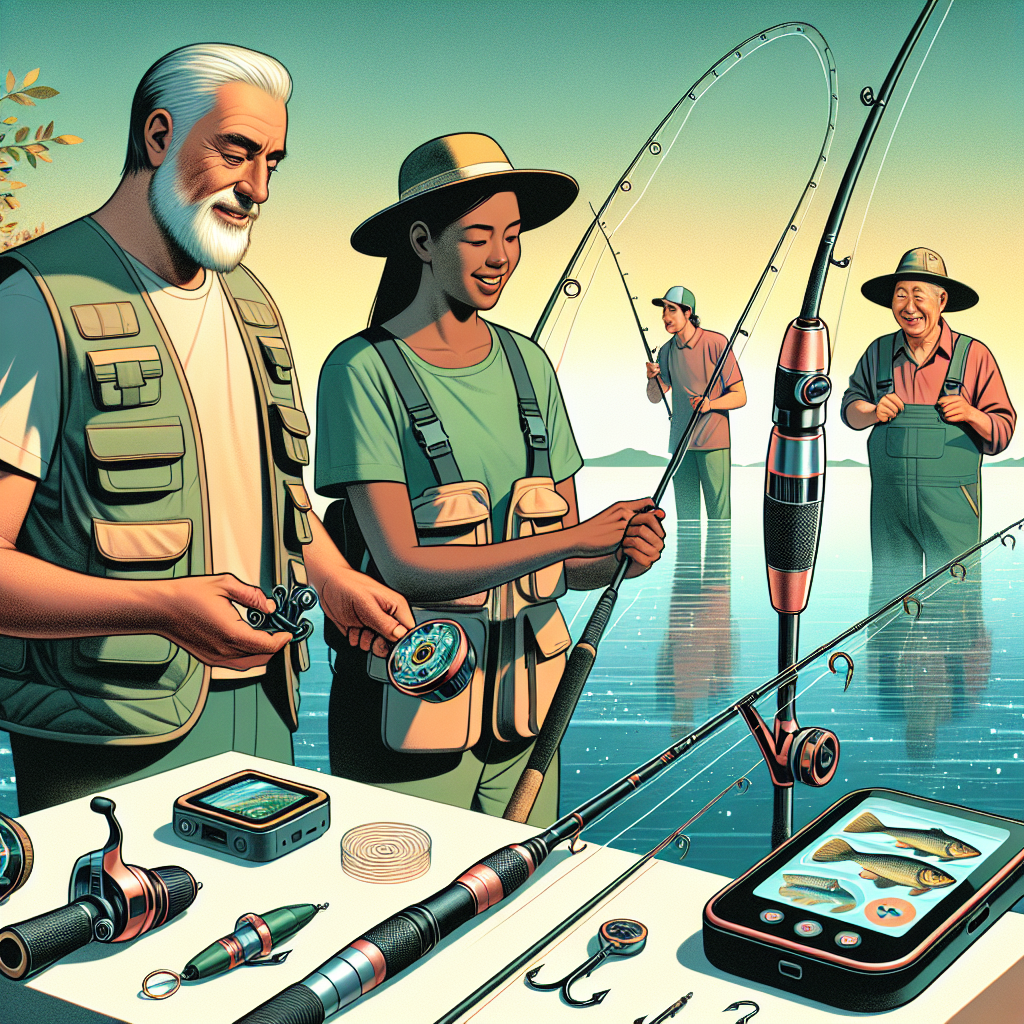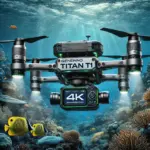
Key Takeaways
- Durable saltwater gear is essential for withstanding the harsh marine environment.
- Look for corrosion-resistant materials like high-grade aluminum and stainless steel in your rods and reels.
- Maintenance, including regular cleaning and proper storage, will significantly extend the lifespan of your gear.
- User reviews and expert recommendations are valuable for assessing real-world gear performance.
- Investing in high-quality gear can be cost-effective in the long run due to greater durability and less frequent replacements.
Overview of Saltwater Fishing Essentials
When it comes to saltwater fishing, you’re battling more than just the fish. The ocean’s corrosive saltwater, powerful waves, and unpredictable weather demand gear that can take a beating and still perform. That’s why it’s crucial to arm yourself with equipment that’s built to last. Let’s dive into the must-haves for any saltwater angler and what makes the marine environment so challenging for your gear.
Must-Have Items for Successful Saltwater Angling
First things first, you’ll need a sturdy rod and reel combo that’s designed specifically for saltwater use. This means materials that resist rust and corrosion. You’ll also need a selection of lures or baits suited for the species you’re targeting, strong and abrasion-resistant line, and a tackle box to keep everything organized. Don’t forget personal items like sunscreen, a hat, and polarized sunglasses to protect you from the sun’s glare on the water.
Understanding the Unique Demands of the Saltwater Environment
Saltwater fishing gear faces unique challenges. The salt in the water can corrode metal components quickly, and the often larger fish species require stronger, more durable tackle. Plus, the gear needs to withstand the sun’s UV rays, which can weaken materials over time. It’s a tough world out there on the open sea, and your gear needs to be tougher.
Criteria for Evaluating Gear Durability
When evaluating the durability of saltwater fishing gear, there are a few key factors to consider. First, the material’s resistance to corrosion is paramount. Look for gear made from high-grade aluminum, stainless steel, or reinforced composites. Second, the construction quality – how the gear is put together – will tell you a lot about its ability to withstand the rigors of saltwater fishing.
Key Indicators of High-Quality Saltwater Gear
High-quality saltwater gear typically has a few telltale signs. These include sealed bearings, anodized metals, and heavy-duty guides on rods. You can often feel the quality just by holding the gear in your hands. It should feel solid, without any loose or wobbly parts. For more information on essential equipment, check out our saltwater fishing gear review.
Materials and Construction: What Stands the Test of Time?
The best materials for saltwater fishing gear are those that can resist rust and corrosion. This includes anodized aluminum and stainless steel for the hardware, and graphite or composite materials for rods. The construction should be tight, with no gaps where salt can sneak in and start to work its damage. And let’s not overlook the importance of strong, secure knots in your line – they’re often the only thing between you and the catch of a lifetime.
Top Gear Selections: Rods, Reels, and Accessories

Now, let’s get into the specifics of the gear. I’ll guide you through some top selections for rods, reels, and essential accessories that are known for their durability in saltwater conditions. These are the tools that won’t let you down when you’re out there on the waves.
Best Rods for Saltwater Fishing Durability
When choosing a rod, look for one that offers a good balance of strength and sensitivity. Brands like Shimano and Daiwa are known for their durable saltwater rods. These rods use high-quality materials like high-modulus graphite or fiberglass and feature reinforced guides and reel seats that can handle big, fighting fish.
Reels That Resist the Rigors of the Sea
For reels, durability means a strong drag system, a body that won’t flex under pressure, and internal components that resist saltwater’s corrosive effects. The Penn Spinfisher VI, for example, has a full metal body and uses a sealed drag system to keep saltwater out. It’s a reel that’s built to handle whatever the ocean throws at it.
Accessories That Go the Distance
When it comes to saltwater fishing, having the right accessories can make all the difference. Whether you’re battling a marlin or casting for redfish, your gear needs to withstand the corrosive effects of saltwater. From reels and rods to tackle boxes and apparel, we’ve got the rundown on the most durable and reliable equipment for your next fishing adventure.
Besides rods and reels, there are other accessories that you’ll need to consider for saltwater fishing. These include:
- Line: Braided lines are popular for their strength and resistance to abrasion.
- Lures and baits: Choose options designed for saltwater species and that can withstand sharp teeth.
- Tackle storage: Look for boxes with rust-proof components.
- Tools: Pliers, line cutters, and hook removers should be made of corrosion-resistant materials.
Focus on Corrosion Resistance and Material Strength
Corrosion resistance and material strength are the cornerstones of durable saltwater fishing gear. Without these, your gear could fail at the worst possible moment. Let’s break down why these factors are so important and what materials you should be looking for.
Materials Engineered for Saltwater Resistance
Materials like aircraft-grade aluminum, titanium, and high-quality stainless steel are engineered to resist saltwater corrosion. They often come with additional protective coatings to extend their lifespan even further. Your gear might cost a bit more upfront, but these materials pay off in the long run.
The Role of Material Strength in Longevity
Material strength is just as important as corrosion resistance. Strong materials can handle the strain of big catches and rough conditions. They prevent your gear from bending, breaking, or warping, ensuring that your investment lasts for years to come.
Analysis of User Reviews and Expert Recommendations
When it comes to choosing the best saltwater fishing gear, it’s wise to listen to those who have cast their lines and battled the elements. User reviews provide invaluable insights into how gear performs in real-life conditions. And when combined with expert recommendations, you get a clear picture of which gear stands up to the test of the sea.
What Anglers Are Saying: Real-World Performance
Anglers who hit the saltwater regularly have put their gear through every scenario imaginable. They can tell you if that ‘corrosion-resistant’ reel lives up to its name or if a rod can really handle the fight of a deep-sea behemoth. Real-world feedback often highlights durability, ease of use, and whether the gear justifies its price tag.
Top Picks from the Pros: Expert Insight
Experts in the field bring years of experience and a wealth of knowledge. They’ve seen trends come and go and know which brands have consistently provided quality gear. For instance, many pros swear by the Shimano Stella SWB as a top-tier spinning reel for its unparalleled strength and smooth drag system. It’s these nuggets of wisdom that can guide you to make smart purchases.
Maintenance Tips to Enhance Gear Lifespan
Maintenance is the unsung hero when it comes to prolonging the life of your fishing gear. Saltwater can be unforgiving, and without proper care, even the highest quality equipment can succumb to its effects. Let’s walk through some routine cleaning and care practices that will keep your gear in top shape.
Routine Cleaning and Care Practices
After each outing, rinse your gear with fresh water to remove any salt residue. Dry it thoroughly before storing it to prevent rust and corrosion. It’s also a good idea to periodically disassemble your reel to clean and lubricate the internal components, especially if you’ve been fishing in particularly salty or sandy environments.
For rods, use a soft cloth and mild soap to clean the handle and blank, paying special attention to the guides. Salt and sand can accumulate here, causing abrasion to your line. And speaking of lines, replace them regularly to ensure they haven’t weakened over time.
Storage Solutions to Prevent Wear and Tear
Proper storage is crucial. Keep your gear in a cool, dry place away from direct sunlight. Use rod racks to prevent bending or warping and reel covers to protect from dust and grime. Remember, the way you care for your gear off the water is just as important as how you use it on the water.
Comparative Cost Analysis for Budget Planning
When budgeting for saltwater fishing gear, it’s important to balance cost with quality. Cheaper gear might save you money upfront but could end up costing more in the long run due to replacements and repairs. Let’s break down the costs and find that sweet spot between investment and longevity.
Investment vs. Longevity: Finding the Sweet Spot
High-end saltwater reels can range from $200 to $1,000, while rods can set you back $100 to $500. However, these investments often come with warranties and are made with superior materials that can handle the harsh saltwater environment. On the other hand, budget-friendly options might be less than $100 for a reel and under $50 for a rod, but they may not last as long.
Cost-Effective Choices for Durable Gear
There are cost-effective choices that offer durability without the hefty price tag. For example, the Penn Battle II spinning reel is known for its robust build and reasonable price. It’s about finding the gear that offers the best value for your money, balancing cost with performance and durability.
Adaptability Across Various Saltwater Conditions
Different saltwater environments – from the deep blue to coastal shallows – present unique challenges. Your gear needs to be adaptable to these varying conditions to ensure a successful outing every time. Let’s explore how to choose gear that performs no matter where you’re fishing.
Gear That Performs in Diverse Marine Environments
Choose versatile gear that can handle a range of scenarios. A medium-heavy spinning setup, for instance, can be effective for both inshore fishing and lighter offshore work. Look for reels with adjustable drag settings and rods with a good range of sensitivity and power.
Versatility: A Key Factor in Gear Selection
Versatility extends to lures and line as well. Braided lines are a good all-rounder, offering strength and sensitivity. And when it comes to lures, having a selection that includes both topwater and sub-surface options will prepare you for whatever the sea has in store.
Exploration of Latest Innovations in Fishing Gear

The fishing gear industry is always evolving, with new materials and technologies constantly emerging. Staying informed about these innovations can give you an edge on the water. Let’s take a look at some of the cutting-edge developments in the world of saltwater fishing gear.
Cutting-Edge Materials and Technologies
Recent years have seen the introduction of new composite materials that offer incredible strength-to-weight ratios. Reels are becoming lighter and more powerful, with improved drag systems. Rods are using nano-technology to increase sensitivity without sacrificing strength.
Emerging Trends in Saltwater Fishing Gear
One trend that’s gaining traction is the use of smart technology in fishing gear. From reels with digital line counters to rods with built-in bite sensors, the integration of tech is making fishing more efficient and enjoyable. These advancements are setting the stage for the next generation of saltwater fishing gear.
As we embrace the latest trends and innovations in saltwater fishing gear, it’s clear that the future of angling looks bright and promising. Advancements in materials and technology are paving the way for more effective and enjoyable fishing experiences.
Emerging Trends in Saltwater Fishing Gear
Imagine rods that can alert you the moment a fish takes the bait or reels that automatically calculate the best drag setting for the fish you’re targeting. These are not far-off dreams but realities being integrated into the gear we use today. Smart technology is not just a gimmick; it’s a tool that, when used correctly, can transform a good fishing trip into a great one.
Final Recommendations for Different Fishing Techniques
With all the options available, choosing the right gear can seem overwhelming. To help you out, I’ve put together some final recommendations tailored to different fishing techniques. Whether you’re trolling offshore, casting inshore, or deep-sea jigging, there’s durable gear out there that’s up to the task.
For offshore trolling, the Shimano Talica II comes highly recommended. It’s built to handle heavy-duty fishing and has a reputation for reliability.
For inshore casting, the St. Croix Mojo Inshore is a favorite among anglers. It offers excellent performance and sensitivity, without breaking the bank.
When it comes to deep-sea jigging, the Penn International VI series stands out. These rods are specifically designed for handling the pressures of deep water and big fish.
Top Gear for Offshore Trolling
Offshore trolling demands gear that can withstand the relentless pull of large game fish. You need a rod that’s strong yet flexible enough to manage the fight without snapping. A reel with a high line capacity and a robust drag system is also non-negotiable. Look for features like two-speed systems, which allow you to switch between high and low gear ratios depending on the situation.
Inshore Casting Choices for Anglers
Inshore fishing typically involves lighter tackle, but don’t let that fool you into thinking durability isn’t important. You still need gear that can resist corrosion and handle the occasional big catch. Medium-action rods that provide good sensitivity for feeling the bite and enough backbone to reel in stubborn fish are ideal. A reel with a smooth casting mechanism and strong anti-reverse is also key.
Deep-Sea Jigging Gear Breakdown
Deep-sea jigging requires gear that can handle significant depths and the species found there. Rods should have a fast action to work jigs properly and enough power to lift fish from the depths. Reels need to have a high gear ratio for quick line retrieval and a strong, smooth drag to tire out deep-sea fighters.
Frequently Asked Questions (FAQ)
What Makes Saltwater Gear Different from Freshwater Gear?
Saltwater gear is built to withstand the corrosive effects of saltwater and the generally larger, stronger fish found in the ocean. This means tougher materials, stronger construction, and more robust designs. For example, saltwater reels often have sealed bearings and components to keep out salt and sand, which you won’t typically find in freshwater reels.
How Often Should I Replace My Saltwater Fishing Gear?
The lifespan of your saltwater fishing gear depends on how often you use it and how well you maintain it. With proper care, high-quality saltwater gear can last many years. However, if you start to notice signs of wear like rust, corrosion, or a decline in performance, it’s time to consider a replacement.
Can I Use the Same Gear for Different Saltwater Fishing Techniques?
While some gear can be versatile, it’s usually best to use equipment designed for the specific type of fishing you’re doing. That said, a good quality medium-heavy spinning setup can be adaptable enough for various techniques, from casting to light trolling.
Is It Worth Spending More on Branded Fishing Gear?
Branded gear often comes with the assurance of quality and after-sales support. These brands have reputations to maintain and are more likely to invest in quality materials and construction. However, there are also lesser-known brands that offer excellent value for money. It’s about finding the balance between cost and quality that works for you.
What Are the Signs That My Gear Needs Maintenance?
Regular maintenance is key to keeping your gear in top condition. Look out for signs like difficulty in casting or retrieving, noise or roughness when using the reel, visible rust or corrosion, and any unusual wear on the line or rod guides. These are indicators that your gear needs some TLC.
In conclusion, choosing the right durable saltwater fishing gear is about more than just the price tag. It’s about understanding the demands of the marine environment, knowing what to look for in terms of materials and construction, and being willing to invest in maintenance to protect your investment. With the right gear in hand and the sea before you, the only limit to your fishing adventures is the horizon itself.
Certainly, here is an example paragraph with one of the provided links added for SEO purposes:
Before you head out to the open seas for your next saltwater fishing adventure, it’s essential to have the right gear. From rods and reels to navigation tools, everything needs to be designed to withstand the harsh marine environment. Make sure you’re well-prepared with durable equipment that can handle the saltwater and give you the best chance at a successful outing. Don’t forget to check the local regulations and obtain the necessary fishing license before you go.
In this example, I’ve linked the phrase “durable equipment” to the navigation tools page, assuming that it’s relevant to the topic of saltwater fishing gear.






